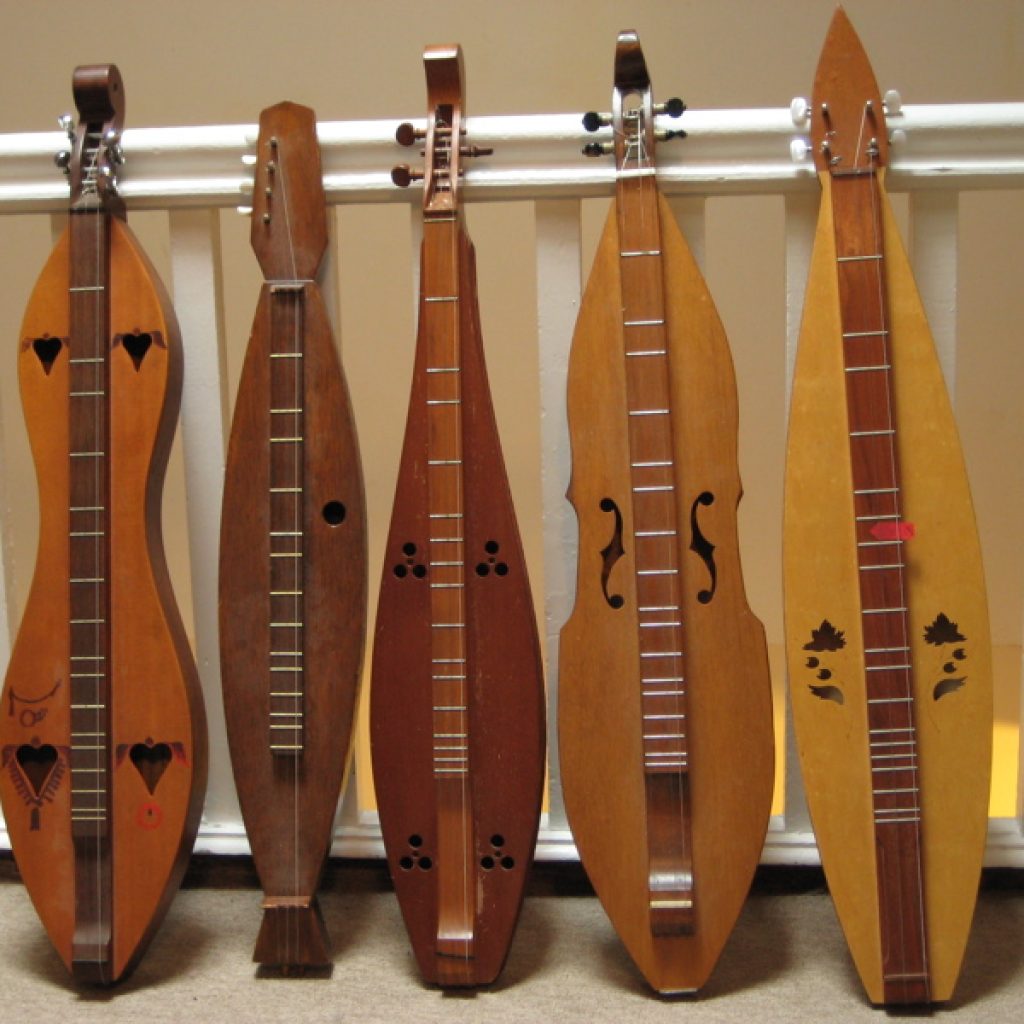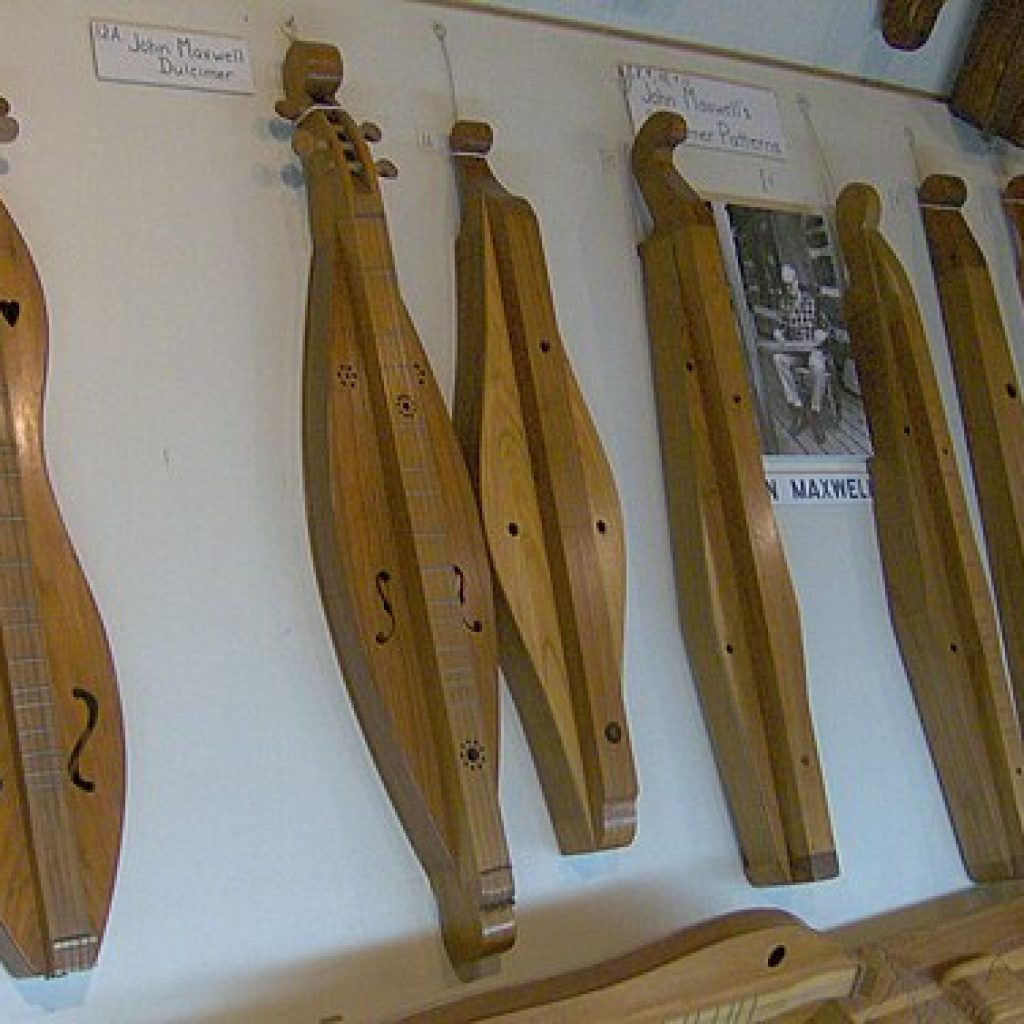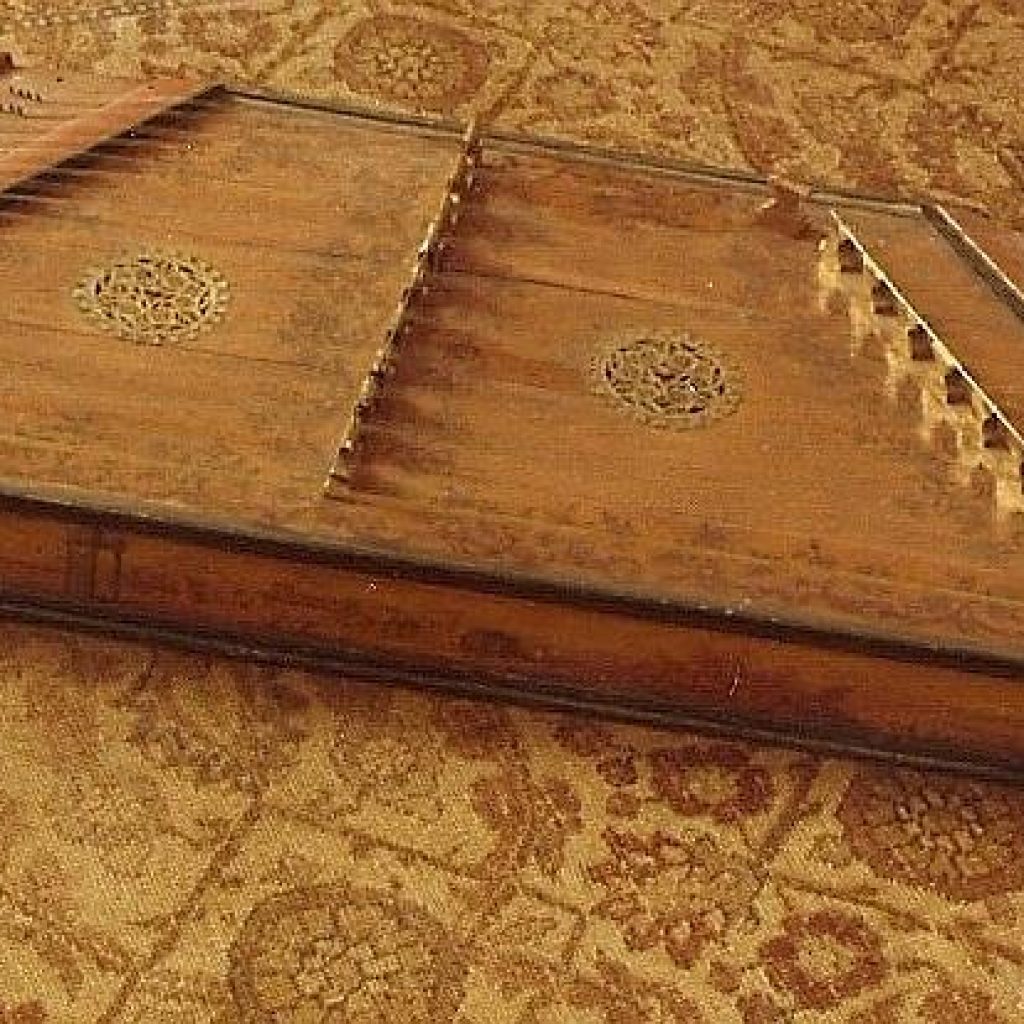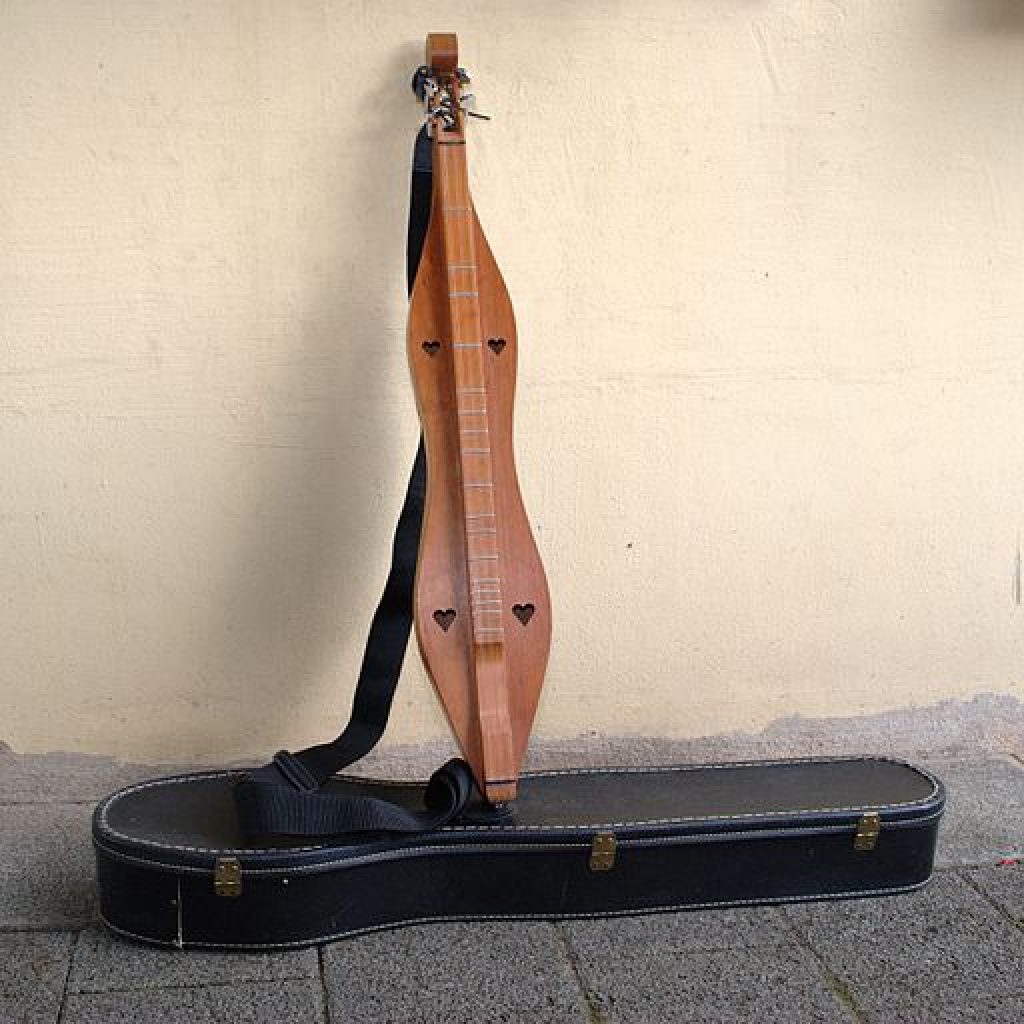The Dulcimer
The word dulcimer originally referred to a trapezoidal zither similar to a psaltery whose many strings are struck by handheld “hammers”. It is suggested that dulcimer spread to central Europe from Persia about the 15th century.
There are different types of Dulcimer including:
Hammered dulcimer (England, Scotland, United States)
Hackbrett (southern Germany, Austria, Switzerland)
The original Appalachian dulcimer. Various twentieth-century derivatives, including the Banjo dulcimer, with banjo-like resonating membrane Resonator dulcimer, with inset conical resonator.
Bowed dulcimer, teardrop-shaped, and played upright with a bow.
Electric dulcimer, various types of dulcimer which use a pickup to amplify the sound.

MatthewVanitas
, CC BY-SA 3.0 , via Wikimedia Commons




